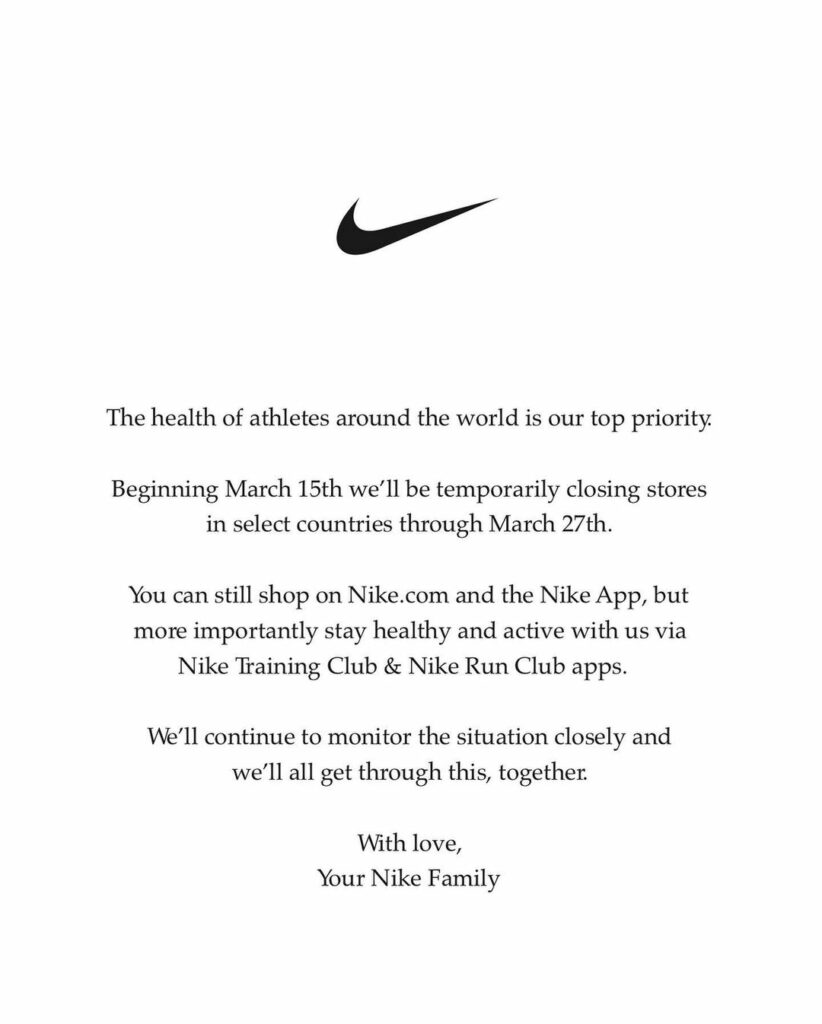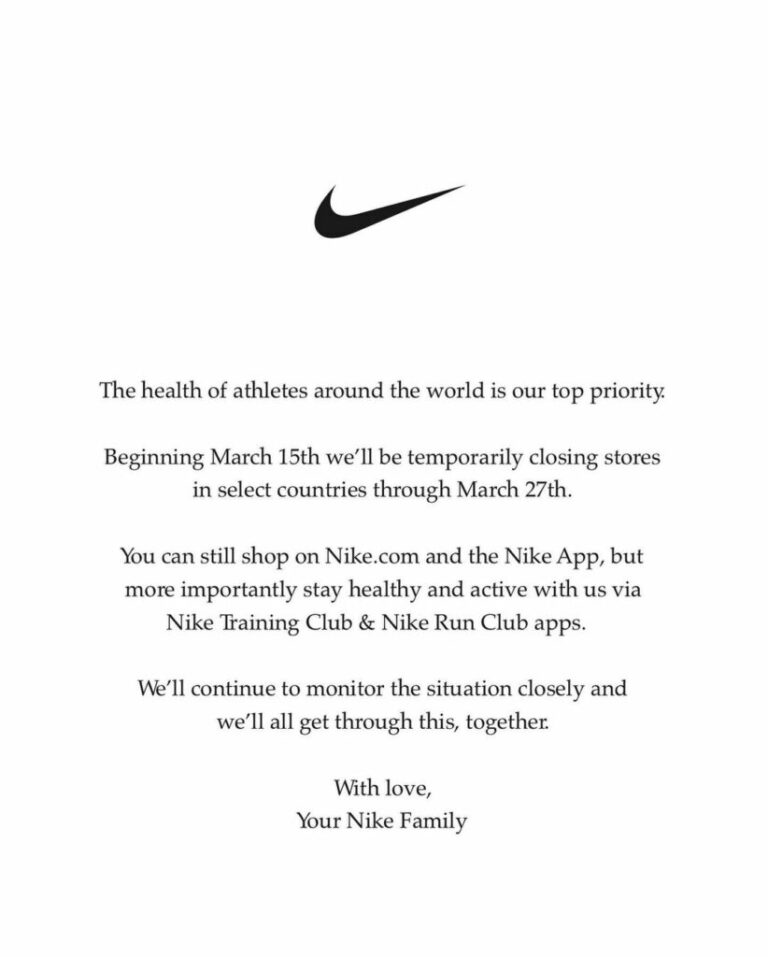Nike is focusing on its branded digital training platforms, specifically Nike Training Club and Nike Run Club.
Photo by Thomas Seller/Unsplash
The COVID-19 crisis has forced many brands, such as Nike, to make necessary adjustments to their business plans, and the American company is doing so through a four-stage business plan that incorporates its e-commerce and supply chain expertise.
According to Nike CEO John Donahoe, the sporting goods company will take corresponding steps: contain, recover, normalize and return to growth — the exact same steps Nike took when the crisis first erupted in China. Nike reported in January: Over 5,000 stores closed Sales in China alone fell 5%, while sales in Hong Kong and Taiwan also fell 5%.
The COVID-19 crisis is the first big challenge for Donahoe, who only took over in January. Wall Street Analysis The first thing the brand has done is to offer digital services to consumers, especially those who are spending more time indoors.

“While our stores were closed, we saw strong e-commerce growth in all three markets during that time,” Donahoe said during an investor call. “Strong interest from Chinese consumers in our activity app translated into strong interest in the Nike commerce app,” he added.
Nike then shifted its focus to its branded training apps, specifically Nike Training Club (NTC) and Nike Run Club. NTC, an at-home training app, saw an 80% increase in weekly users. Both platforms are linked to Nike's e-commerce site, Digital sales up 30 percent China, Taiwan, Hong Kong and Macau.
“Chinese consumers' strong interest in our activity app has translated into strong interest in Nike's commerce app,” said Nike CEO John Donahoe.
Now that the pandemic is impacting North America and Europe (which generate 67% of Nike's revenue), Donahoe said Nike will implement the same four phases it did in China.
Step 1: Containment
The company is making the most of its virtual training app by waiving the fee for the premium version of NTC: in addition to the features of the free version, users also get access to on-demand training and tips from trainers for 90 days.
Step 2: Recovery
As of April 1, 80% of Nike's 7,000 stores in China have reopened, including in Wuhan, where the outbreak first began. Nike achieved this by gradually reopening stores city by city based on customer health status. “Consumers are returning to the streets and retail foot traffic is returning. Consumers are in the stores. They're shopping enthusiastically, often wearing masks, and they're back on the streets.” To tell Donahoe.

Step 3: Normalization
During this phase, stores will operate as they did before the outbreak. Since this phase was implemented in China, Nike's shares have surged 10 percent in the trade industry. “Our digital business in China has accelerated further over the past few months, and we are now seeing double-digit week-over-week increases in retail traffic, with some stores already back to year-ago levels,” Donahoe said.
Step 4: Return to growth
The final step is regaining momentum. Before the coronavirus spread and infected much of the world, Nike's shares were up 32%. Donahoe said Nike is looking to build stronger online and offline experiences and regain its footing in cities like New York, London and Shanghai. “We know that in times like these, strong brands become even stronger, and there's no company better suited to navigate the current situation than Nike.” To tell Donahoe.

